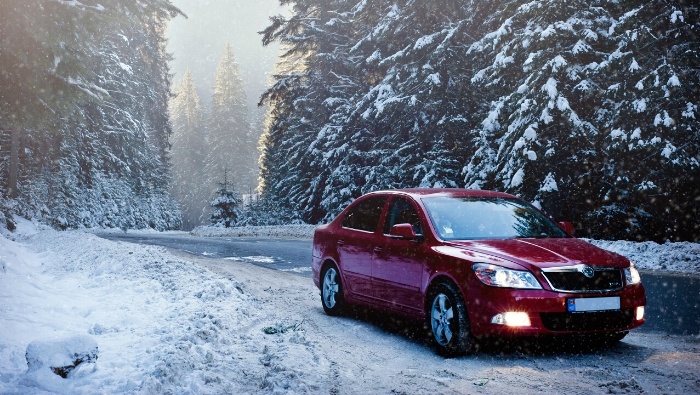15 Winter Fuel Economy Tips To Make Gas Dollars Go Further
When it comes to winter fuel economy, how much can you save? Try these 15 tips to reduce fuel consumption this winter and reward both your wallet and the environment.

In today’s economy, every little bit helps when it comes to decreasing your expenditures. Steer your vehicle towards this advice to reduce your fuel consumption while rewarding the environment with your diminished carbon footprint with these 15 fuel economy tips.
1. Slow down.
If you drive 50 MPH as opposed to 60 MPH, your fuel usage can drop by as much as 7%.
2. Don’t sit idly waiting.
Depending on the type of car you have, you may burn about 1/8 gallon of gas for every 15 minutes of idling. Depending on the gas prices in your area, you can do the math to determine how much idling for 10 to 15 minutes costs you.
Tip: Remember never to idle backed up to a snow bank, even with the window cracked open. Carbon Dioxide re-entering your vehicle from the exhaust can be fatal.
Sign Up for Savings
Subscribe to get money-saving content by email that can help you stretch your dollars further.
Twice each week, you'll receive articles and tips that can help you free up and keep more of your hard-earned money, even on the tightest of budgets.
We respect your privacy. Unsubscribe at any time.
3. Keep your windows up and the sunroof closed.
When you drive with the windows rolled down or the sunroof open, you create aerodynamic drag that will drive your fuel costs up by 10%.
4. Watch tire pressure.
You can use up to 4% more fuel if your tire pressures are uneven. Tire gauges are easy to use and the recommended tire pressure can be found on the sticker inside the driver’s door.
Tip: As soon as permitted in your state, have your winter tires installed and avoid the inevitable line-ups after the first snowfall of the season.
5. Sign up!
If you do not have roadside assistance, you may want to consider purchasing a membership in AAA. Decent coverage is available for around $100 per year. This is a worthwhile investment because one call to a tow truck could well exceed your annual membership.
Tip: You will also enjoy perks at a selection of businesses just for being a member.
6. Remove the roof rack.
Due to the increased drag, leaving an empty roof rack on your roof is worse than driving with the windows open. Expect your fuel use to be increased by 20% or even more, depending on the wind direction.
7. Participate in trip planning.
Take a moment to plan your stops when doing errands. Choose the route that makes the shortest loop back home.
8. Put your vehicle on a diet.
Do you think the extra weight will increase your traction in the snow? It may, but it will cost you four cents a gallon for every 100 pounds of excess weight and provide the disadvantage of a projectile in the event of an accident.
Tip: While a rear-wheel drive vehicle could adhere better to the snow, a front-wheel drive vehicle will worsen the weight distribution.
9. Turn off the air conditioning.
Using your A/C can reduce fuel efficiency by about 3 MPG. If you need your A/C, use the re-circulation option, avoid using the maximum setting, and look for an A/C system with economy mode when purchasing a new vehicle.
10. Avoid premium fuels.
Ample studies have demonstrated that premium fuels perform just as well as economy options, with the only real payoff being, possibly, less environmental impact. Even car manufacturers admit that the stated requirement for premium fuel use is merely a suggestion. Premium fuels can cost as much as 40 cents more per gallon.
11. Forget cruise control.
It has long been believed that using cruise control to keep your vehicle at a constant speed translates into big fuel savings. On a flat, straight road, this can be true. However, when driving over hills, even if they are gradual, your fuel requirement will actually increase.
12. Be careful of fuel spillage.
Avoid continuing to top off the tank after the pump automatically shuts off. Gas can end up on the ground or all over your boots and favorite jeans. If you simply want to throw money away, find a wishing well.
13. Keep vehicle maintained.
Do not neglect to keep your vehicle well-tuned. Purchasing a winter preparation package from your local garage can result in 30% better fuel efficiency, depending on the age and type of your car. Air filters, worn brakes, residue in the fuel lines, and deteriorated oil will reduce fuel performance.
14. Stay in line.
Misalignment of your vehicle can increase drive-train drag, translating into a cost of up to 21 cents a gallon or more in fuel usage.
15. Forget about fuel density.
Don’t bother getting up at 5 AM to save money on fuel, believing the fuel density changes throughout the day, costing you more to fill up in warmer weather. Fuel is stored underground in insulated tanks that keep the temperature constant. You will not save any money, but you will be cutting into your time with the sandman for nothing.
Gas evaporates, but your money doesn’t have to disappear. If you practice fuel efficiency on a regular basis and maintain your vehicle in good running order, you will notice gas savings, which will help to keep your blood pressure down when you see the price of oil drop while the price you pay per gallon is unaffected.
Reviewed November 2024

